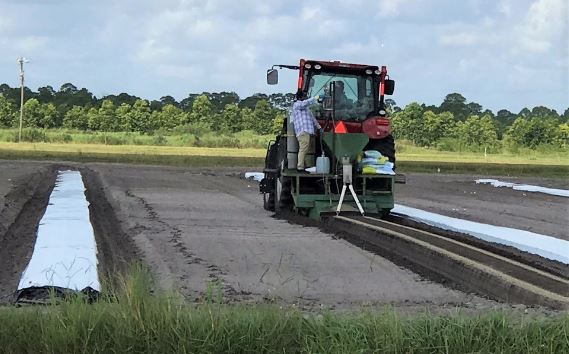By Clint Thompson Nutsedge may not be the most problematic weed Florida vegetable and specialty crop producers encounter every year, but it is a problem. Nutsedge is most concerning because it is the only weed to puncture through plastic mulch, says Nathan Boyd, University of Florida Associate Center Director and Associate Professor of Horticulture/Weed Science at the Gulf Coast Research …
Future of Fumigation: Is the End in Sight?
By Clint Thompson One of the most efficient ways to control nematodes is through fumigation. Ten years from now, that may not be the case, though, believes Johan Desaeger, UF/IFAS Assistant Professor of Entomology and Nematology. “I think the fumigants, although they’re still the standard, I don’t think 10 years from now there’s going to be that much fumigation left. …
Supplemental Fumigation Strategies for Tomato Production
By G.E. Vallad, J. Desaeger, J. Noling and N. Boyd Vegetable and strawberry growers have long relied on soil fumigants to contend with various soilborne pathogen and pest complexes, as part of an integrated management strategy that includes crop resistance, cultural control and pesticides. However, with the loss of methyl bromide (MBr), many growers have struggled to maintain consistent soilborne …
Fumigants for Nematode Management in Vegetables
By Abolfazl Hajihassani and Chinaza Nnamdi The majority of vegetable production in Georgia is located in multiple counties in the southern region of the state. Vegetables are grown year-round on both raised beds covered with polyethylene plastic mulch and on bare ground. Using a comprehensive survey conducted in 2018, we have documented that root-knot nematodes, Meloidogyne spp., are the No. …
Supplemental Fumigation Strategies for Soilborne Pests, Diseases
By Ashley Robinson The phaseout of methyl bromide continues to stimulate research into the use of other soil fumigants for controlling soilborne pathogens, nematodes and weeds to an acceptable level for production. Researchers at the University of Florida Institute of Food and Agricultural Sciences (UF/IFAS) are looking at ways to modify the current fumigation system to better reflect the distribution …
Diversification Key for Nutsedge Control in Vegetable Fields
By Clint Thompson University of Georgia Cooperative Extension weed specialist Stanley Culpepper encourages vegetable growers to diversify their management programs against nutsedge. This protects against potential resistance and provides adequate control. “In general, I would say with our guys, I’m not overly concerned because our fields with our most nutsedge, they get fumigation, they get tillage and they get herbicides,” …
Managing Gummy Stem Blight in Watermelon
By Ashley Robinson Gummy stem blight (GSB), also known as black rot, is a common issue for watermelon producers in the Southeast. Didymella bryoniae, the fungus that causes GSB, favors warm and humid weather, leaving the Southeast growing region susceptible to the disease’s devastating effects. If not managed well, it can cause significant yield loss for growers. RECENT ISSUES Over …
Fumigation for Soilborne Pathogens in Strawberries
By Ashley Robinson Since the phaseout of methyl bromide, charcoal rot, caused by the pathogen Macrophomina, has become a growing issue for Florida strawberry growers. For years, soil fumigation with methyl bromide was the preferred method to manage soilborne pathogens such as Macrophomina. However, because methyl bromide was categorized as a Class I ozone-depleting substance, its production and use have …
















